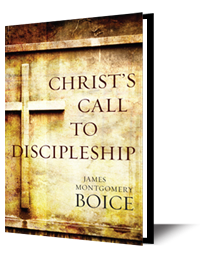
In Matthew’s account, the burial of Jesus was arranged by Joseph of Arimathea, “a rich man” who went to Pilate to ask that the body be given to him. Matthew calls him “a disciple of Jesus” (v. 57). Mark and Luke add that he was “a member of the Council,” which means that he was a member of the Sanhedrin. Mark says that he was “waiting for the kingdom of God” (Mark 15:43) and Luke that he was “a good and upright man, who had not consented to their decision and action” (Luke 23:50-51). John alone reports that he was assisted by Nicodemus, who brought the spices. The Romans did not normally allow crucified persons to be buried, least of all traitors. So the fact that Joseph approached Pilate is a testimony to his courage.

The burial of Jesus is the second of the core doctrines of Christianity listed by the Apostle Paul in 1 Corinthians 15: “For what I received I passed on to you as of first importance: that Christ died for our sins according to the Scriptures, that he was buried, that he was raised on the third day according to the Scriptures, and that he appeared to Peter, and then to the Twelve” (vv. 3-5). It occupies a significant amount of space in each of the four gospels: ten verses in Matthew, six verses in Mark, six in Luke, and five in John. But we do not generally think about Jesus’ burial very much.

Later on Jesus told his disciples, “Because I live, you also will live” (John 14:19). Still later, Paul wrote to the Corinthians, “Christ has indeed been raised from the dead, the firstfruits of those who have fallen asleep. For since death came through a man, the resurrection of the dead comes also through a man. For as in Adam all die, so in Christ all will be made alive. But each in his own turn: Christ, the firstfruits; then, when he comes, those who belong to him” (1 Corinthians 15:20-23).

The third miracle was the earthquake that split the rocks and broke open many of the tombs. Earthquakes themselves are not miraculous, but the timing of this one was. It was at the very moment when Jesus died. Moreover, it was the prelude to the resurrection of many holy persons. Matthew does not explain what the earthquake meant, but it probably corresponded to the giving of the law at Sinai, when the earth also trembled. That was a time of fear for those who had been brought out of Egypt, for God is a holy God and the law is a terrible thing for those who have broken it. The revelation of the presence of God on Mount Sinai was so terrifying that even Moses said, “I am trembling with fear” (Hebrews 12:21). The earthquake at Calvary matches the earthquake at Sinai and reminds us that although “the law was given through Moses; grace and truth came through Jesus Christ” (John 1:17).

We need to be specific about what the rending of the veil teaches.
1. The old system of offering sacrifices year by year was over. The priests probably sewed the veil back together and went on with their traditional religious practices. But in the sight of God the old age had ended and a new age had begun. This new age embraces both Jew and Gentile within Christ’s church, which is why Paul was able to write to the Ephesians as he did. “For he himself [Jesus] is our peace, who had made the two one and has destroyed the barrier, the dividing wall of hostility, by abolishing in his flesh the law with its commandments and regulations. His purpose was to create in himself one new man out of the two, thus making peace, and in this one body to reconcile both of them to God through the cross, by which he put to death their hostility” (Ephesians 2:14-16).


















